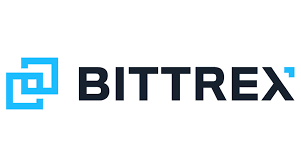In the world of cryptography and data security, hash functions play a vital role. One such hash function gaining popularity is BLAKE-256. In this article, we will explore the fundamental concepts of BLAKE-256, its features, applications, and security aspects.

The BLAKE 246 hash function is a cryptographic hash function that was designed by Jean-Philippe Aumasson, Luca Henzen, Willi Meier, and Raphael C.-W. Phan. It was first published in 2013 and is based on the BLAKE hash function, which was a finalist in the NIST hash function competition. The BLAKE 246 hash function is known for its high level of safety and efficiency. It has a 246-bit output and can process messages of any length. This makes it suitable for a wide range of applications, including digital signatures, password hashing, and data integrity verification. Let us take a deeper look at this encrypted system.
Features of BLAKE-256
Let’s delve into the five main features that make BLAKE-256 stand out.
High security
It is designed to prioritize security. It utilizes the Merkle-Damgard construction, which ensures the hash function’s resistance against various cryptographic attacks, such as collision attacks and preimage attacks. The algorithm’s security is further enhanced by its ability to process data blocks of 512 bits, making it highly resistant to brute-force attacks.
Efficient performance
Efficiency is a vital aspect of any hashing algorithm, and this encrypted system excels in this regard. By employing a parallelized design, BLAKE-256 maximizes its performance on modern multi-core processors. The algorithm also benefits from its simple and optimized structure, leading to faster hashing computations and reduced computational overhead.
Flexibility and adaptability
It provides a high level of flexibility, allowing users to tailor many settings to their individual requirements. Users can change the output size, allowing them to produce encoded values of varying lengths. Furthermore, it is readily implemented into a variety of cryptographic protocols and applications, making it applicable to a wide range of circumstances.
Endianness agnostic
This system of encryption is endianness agnostic, meaning it can process data regardless of its byte order. This feature ensures compatibility across different platforms and architectures, making it a versatile hashing algorithm suitable for a wide range of applications.
Platform and language independence
Unlike some hashing algorithms that are tied to specific programming languages or platforms, it is designed to be independent of both. This characteristic enables developers to implement BLAKE-256 in various programming languages and deploy it on different hardware platforms, expanding its usability and adoption.
Applications of BLAKE-256
BLAKE-256 is a cryptographic hash function that offers a range of applications across various industries. One notable application is in the field of blockchain technology. Its strong security features make it an ideal choice for securing transactions and ensuring data integrity within blockchain networks. Its efficient performance and resistance to cryptographic attacks make it a reliable option for securing digital assets and maintaining the integrity of decentralized systems.
Another significant application of this encrypted system is password hashing. Organizations can improve the security of user credentials by employing BLAKE-256 as a password encryption technique. The resistance of this system to brute-force assaults, as well as its ability to create unique hashing algorithms for each password, offer an extra degree of security against unauthorized access.
Furthermore, it finds utility in the realm of digital signatures. This system may be used to establish digital signatures that validate the authenticity and integrity of electronic documents due to its great collision resistance and safe cryptographic features. This application is especially useful in industries that rely substantially on digital documentation, such as law, healthcare, and government.
Security considerations
BLAKE-256 is a digital signature algorithm that provides high security. It features a 256-bit output and is hence immune to brute-force assaults. It also includes collision resistance, which means that two distinct inputs are unlikely to give the same encode value. This makes it appropriate for a wide range of applications, including password storage and encrypted signatures. Furthermore, the cryptographic community has thoroughly analyzed and examined BLAKE-256, further verifying its security features. It is suggested that BLAKE-256 be used in combination with other cryptographic methods and best practices to achieve optimal security. Users may have assurance in the integrity and security of their data by using this system.











